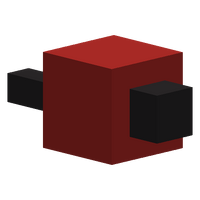Module:Infobox/doc: Difference between revisions
m fix example component image |
|||
| Line 27: | Line 27: | ||
The main image to show on the infobox, usually a 200px render of the component. | The main image to show on the infobox, usually a 200px render of the component. | ||
Default: <code>[[File:<ID> | Default: <code>[[File:<ID>_thumbnail_render.png|200px]]</code>, where <code><ID></code> is the string passed as the <code>id</code> argument. | ||
=== <code>configurable</code> (optional) === | |||
Whether this component can be configured after being placed in order to e.g. change the number of inputs. | |||
Default: no | |||
== <code>args.io</code> (optional) == | == <code>args.io</code> (optional) == | ||
Revision as of 02:02, 7 September 2025
p.component
[[File: |200px]] |200px]]An example gate | |
| Component info | |
|---|---|
| Internal ID |
MHG.ExampleGate |
| Configurable | No |
| Input and output | |
| Input count | Adjustable from 1 to 5 |
| Output count | 2 |
| Propagation delay | 1 tick |
Renders an infobox for a primitive Logic World component.
args (required)
title (required)
The title shown above and outside the infobox, usually the name of the gate.
id (required)
The ID of the component as specified in its .jecs definition file.
image (optional)
The main image to show on the infobox, usually a 200px render of the component.
Default: [[File:<ID>_thumbnail_render.png|200px]], where <ID> is the string passed as the id argument.
configurable (optional)
Whether this component can be configured after being placed in order to e.g. change the number of inputs.
Default: no
args.io (optional)
minInputs (required)
The minimum amount of inputs that the component can have, e.g. the AND gate must have at least two inputs.
maxInputs (optional)
For components with an adjustable amount of inputs, this argument specifies the maximum number of inputs, e.g. the AND gate can have at most 4 inputs.
outputs (required)
The number of outputs this component has.
propagationDelay (optional)
The number of ticks that this component takes before its outputs reflect its internal state, whether through setting outputs or interacting with the world in some other way (e.g. displays).

